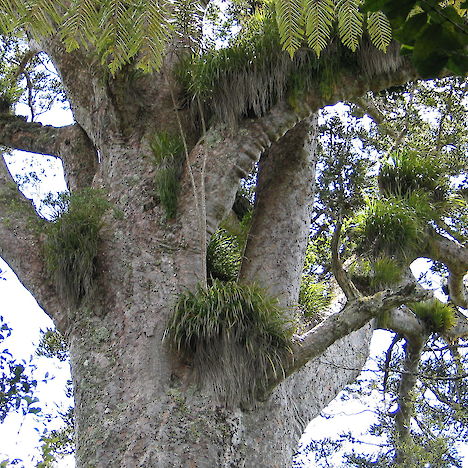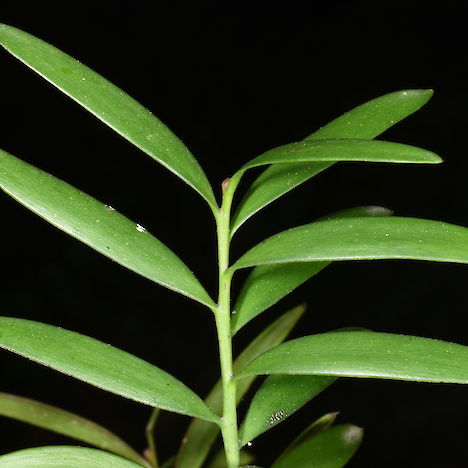Threat category:
Threatened: Nationally Vulnerable?Regions:
Northland, Auckland, Waikato, Bay of PlentyDistribution:
Naturally occurring in North Island from Te Paki south to Pukenui in the west and near Te Puke in the east
Key Features
- Kauri is a tall (30-60 m) forest tree, with a wide (up to 2 metres daimeter), typically branchless trunk.
- The bark is blue-grey and falls off in large, thick flakes, leaving areas of freshly exposed rust brown underbark.
- Juvenile leaves are 50-100 mm long and lance-shaped; adult leaves are 20-35 mm long, oblong, and have a rounded tip.
Distribution and Habitat
- Kauri naturally occurs in the North Island from Te Paki south to near Kawhia in the west and near Te Puke in the east.
- It is widely planted outside of its natural range in both North and South Islands.
- Most remnants of kauri forest are now found on the hills and ranges, often on low nutrient soils and in sites with high light levels, but kauri was likely to have favoured a range of habitats before the more easily accessed areas were logged.
Threats
- Kauri dieback disease (known as Phytophthora agathidicida) is the main threat to kauri. It can result in yellowing of foliage, loss of leaves, canopy thinning, dead branches, bleeding lesions at the base of the trunk, and the death of trees and seedlings.
Management Opportunities
- Ensure that forest owners are aware of the threat of kauri dieback.
- Prevent transmission of kauri dieback to unaffected trees and populations, particularly through human activities.
- Protect habitat.
Monitoring Options
- Check existing populations annually.
Further Information and Support
References
- New Zealand Plant Conservation Network (NZPCN). http://www.nzpcn.org.nz
- Dawson, J., Lucas, R., Conner J., and Brownsey, P.J. (2011). New Zealand’s native trees. Craig Potton, Nelson, 576 pp.




